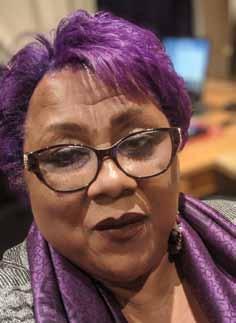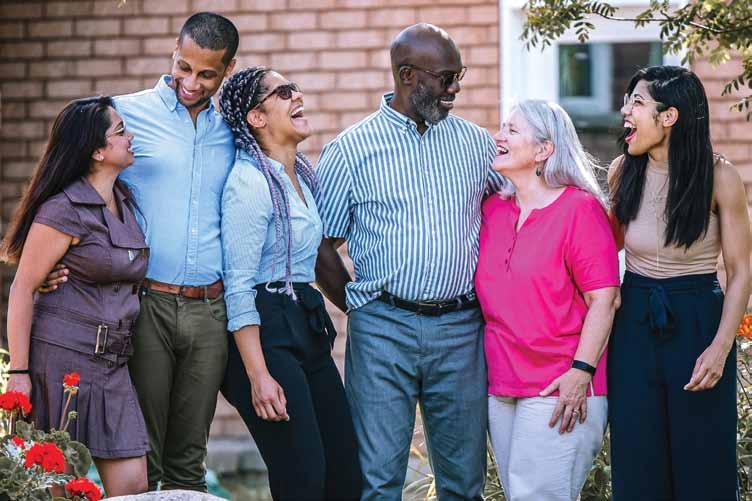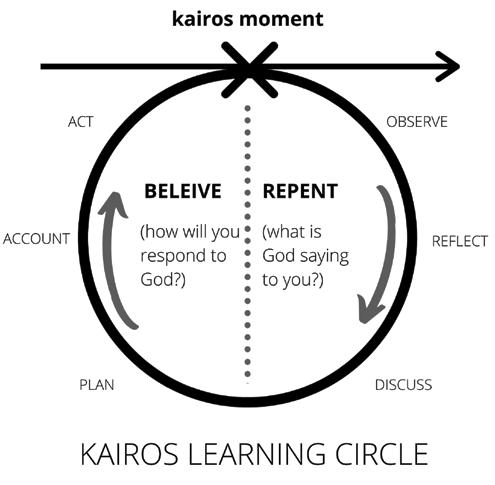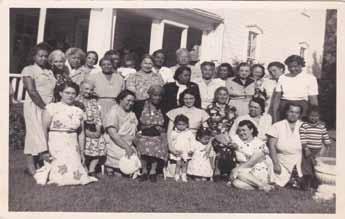
4 minute read
Where Do You Draw the Line?
Where Do Yo u Draw The Line
A conversation with Carol Parsons, president of Canadian Baptist Women, and Women in Focus (Canadian Baptists of Western Canada)
Advertisement
Carol Parsons lives on an acre or two of farming land in Portage La Prairie, Manitoba. She is Métis, from Peguis First Nation Treaty 1 Territory in Manitoba and has always identified as Indigenous. A former support worker with family care agencies in Manitoba and most recently a youth care practitioner in a group home for youth girls, she’s the first to note that relative to Manitoba’s population at large, Indigenous girls have made up a disproportionately higher percentage of the population she’s served.
live magazine sat down with Carol to talk about racism.
live magazine: You’ve seen and read the global reaction to George Floyd’s death—the peaceful protests, toppling of statues, etc. How have you been processing all of these events? Carol: The word that comes to me is unrest. I’ve become agitated and I’ve felt helpless. Like everybody else, I have lots of questions. I know you have to have hard conversations but you tend not to want to deal with it.
live magazine: Tell us about your experience of systemic racism. Carol: One of the schools I went to was an Indigenous school in Winnipeg. I remember kids coming up to me and saying “Why are you here? You’re not Indian.” So I grew up not knowing where I fit in.
live magazine: But you are Métis. Carol: I was either too white or too brown. So where did I fit in this world? Where was home? Colonization happened to our Indigenous brothers and sisters. So I could see how my whiteness could threaten those kids. And yet I considered myself Indigenous. I did have a few friends who stood up for me—angels in disguise.
live magazine: How else did you experience racism? Carol: I’d hear other people having conversations, talking about Indigenous people. They didn’t know that I am Métis and I identify as Indigenous. I remember saying once, “I am Indigenous,” and that shut the conversation down. But this is the thing. Where do we draw the line?
live magazine: What do you mean? Carol: My cousin-in-law is Black but his mother was full Treaty Indian. I’m Indigenous but I look White. So where do we draw the line? We can put Indigenous people in a line and they will all look different and yet they are all Indigenous.
Carol Parsons
live magazine: What are some of the hard lessons you’ve learned because you’ve been racialized? Carol: What just came to me when you asked that question is that I had to learn not to be rebellious. I learned that I wanted to be a peacemaker and I learned how to walk away . . . but with my head held up, not down. My mother and a small circle of friends taught me that.
live magazine: How did God make Himself known to you through those experiences? Carol: Through prayer and through community. Something shifted in my questions to God about belonging. It happened when I stepped into ministry with Women In Focus, began sitting with Canadian Baptist Women and showed up at women’s conferences like the 2017 Assembly of North American Baptist Women’s Union in Toronto. I just loved seeing all the different women there. The only question I asked God was, “Where are my Indigenous sisters?”
live magazine: Wow! Carol: It was almost like God had to take all of my longings for home and for a purpose and put me out there . . . because I was asking, “Why? Who’s there for the hurting and the wounded? Who’s walking alongside them?” And God showed me, through these settings, that He is at work in the world.
live magazine: What do you want to share with readers about becoming anti-racist? Carol: The Church has to be a voice for the voiceless. I’m looking at it broadly at this point: anti-Black racism, missing and murdered Indigenous women and girls. We are supposed to stand up for justice and I hope we can start speaking up and out about injustice at every opportunity we’re given, whether at church, conferences or retreats.
live magazine: Are you able to do that? Carol: I could stand up and speak at my church if I had mentors; people who could teach me how to do it. It also starts with me having those one-on-one conversations with people— making sure that my heart is in the right place. A few years ago I wouldn’t have been able to even have this conversation with you.
live magazine: What could justice look like moving forward from this moment in our collective history? Carol: Prayer. We can all continue to pray for racial healing.
Not hiding. I’m Métis and I am a daughter of the King and He created me in His image. No matter our race, we are created in God’s image. So if you’re hiding your nationality, please don’t.
Forgiveness. I’ve forgiven some situations quicker than others. But when I look back at my life I think: “If God can forgive me of everything in my life, how can I hold that against other people and not forgive?” You find freedom when you forgive; freedom to move forward. Renée James

![D[I]ASPORA](https://assets.isu.pub/document-structure/200908160341-67ca3a31c787df231604deb90b759774/v1/64b19e66a15d3c215c1c68d3c24a5da3.jpg)





